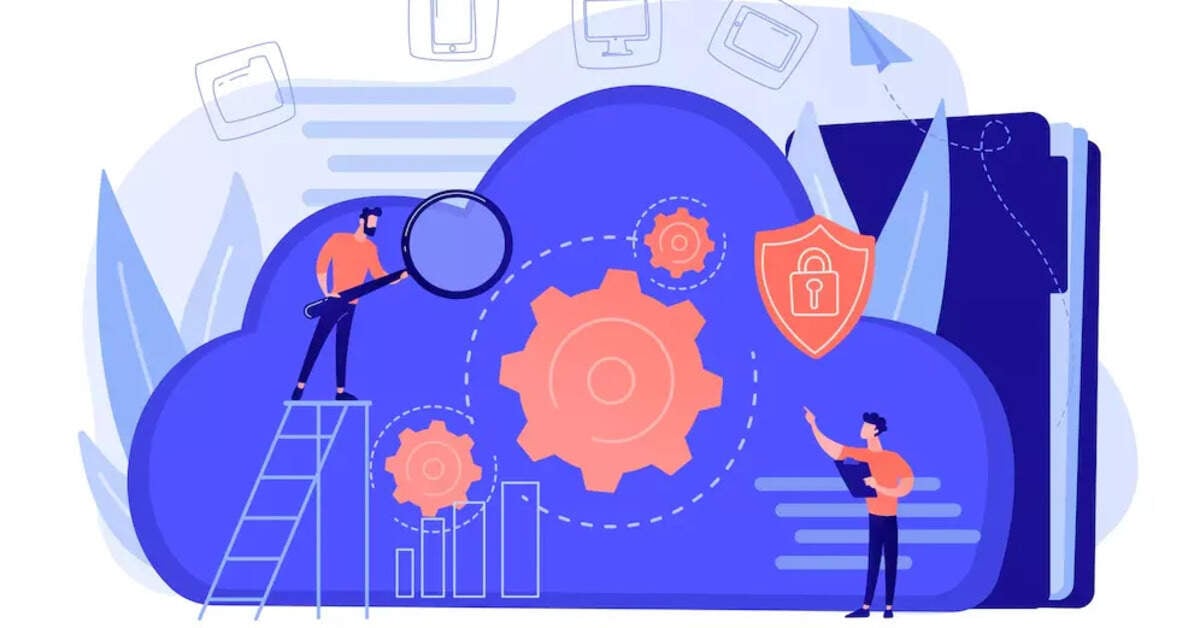In today’s digital economy, businesses are no longer confined to a single cloud provider. The adoption of a multi-cloud strategy, where an organization uses services from two or more cloud providers, has become a mainstream practice. This approach offers a host of benefits, from mitigating vendor lock-in to enhancing resilience and leveraging best-of-breed services. However, as the multi-cloud landscape has matured, so have its complexities. The next evolution of multi-cloud is not just about using multiple clouds; it’s about managing them with a new level of sophistication. This article will provide a comprehensive look into the evolving world of multi-cloud strategies, exploring the key drivers behind its growth, the new challenges that have emerged, and the strategic imperatives for businesses to successfully navigate this intricate environment. We will delve into critical areas such as cloud security, cost management, and the push for a unified operational framework, offering a deep dive into how a multi-cloud strategy is being redefined for the future.
The Drivers Behind Multi-Cloud Adoption

The multi-cloud approach is not a random choice; it is a strategic decision driven by a number of compelling business and technical factors. Understanding these drivers is key to building a successful multi-cloud strategy.
A. Mitigating Vendor Lock-In: For many businesses, the fear of being locked into a single cloud provider is a major concern. This can lead to a lack of negotiation power on pricing, an inability to use a competitor’s superior service, and a reliance on a single provider for all of a company’s critical infrastructure. A multi-cloud strategy mitigates this risk by giving a company the flexibility to move its workloads between different providers and to use the services that best fit its needs.
B. Enhancing Resilience and Disaster Recovery: A multi-cloud strategy can significantly enhance a company’s resilience. By deploying workloads across multiple cloud providers, a company can ensure that if one provider experiences an outage, its services can continue to run on another. This is a critical component of a modern disaster recovery and business continuity plan, and it is a major driver of multi-cloud adoption, particularly in highly regulated industries.
C. Leveraging Best-of-Breed Services: No single cloud provider is the best at everything. One provider might have a superior service for machine learning, while another might have a more cost-effective solution for data storage. A multi-cloud strategy allows a company to pick and choose the best services from different providers, creating a highly optimized and innovative infrastructure. This “best-of-breed” approach is a powerful way to gain a competitive advantage.
D. Meeting Regulatory and Data Residency Requirements: For multinational corporations, a multi-cloud strategy can be a necessity for meeting regulatory and data residency requirements. A company may be required to store data in a specific country, and a multi-cloud strategy allows it to use a local cloud provider to meet this requirement while still using a global provider for other services. This is a critical factor for companies that operate in highly regulated industries like healthcare and finance.
E. Cost Optimization and Negotiation Power: While managing multiple clouds can be complex, it can also lead to cost optimization. A multi-cloud strategy gives a company the ability to move workloads to the most cost-effective cloud provider at any given time. It also gives a company more negotiation power on pricing, as it can threaten to move its workloads to a competitor if it is not getting a fair price.
The New Challenges of Multi-Cloud
As the multi-cloud landscape has matured, a new set of challenges have emerged. These challenges are not just technical but also strategic, and they are defining the next evolution of multi-cloud.
A. Security and Compliance Complexity: Securing a multi-cloud environment is a new and complex beast.
- Inconsistent Security Controls: Each cloud provider has its own set of security tools and policies. This can lead to inconsistent security controls across a multi-cloud environment, creating blind spots and vulnerabilities.
- Data Governance and Compliance: Managing data governance and compliance in a multi-cloud environment is a significant challenge. A company must ensure that its data is protected and that it is in compliance with all relevant regulations, such as GDPR and HIPAA, across all of its cloud providers.
B. Cost Management and Optimization: While a multi-cloud strategy can lead to cost optimization, it can also lead to a new set of cost challenges.
- Hidden Costs: The costs of multi-cloud are not always clear. A company may be paying for data transfer fees between different cloud providers, or it may be paying for services that are not being used. This can lead to a new type of “cloud waste” that is difficult to manage.
- Cost Management Tools: The need for a multi-cloud cost management strategy has led to the rise of FinOps, or Cloud Financial Operations, which is a new discipline that is focused on managing and optimizing cloud spending. The next evolution of multi-cloud will involve a more sophisticated approach to cost management.
C. Operational Complexity and a Lack of Unified Tools: The operational complexity of a multi-cloud environment is a major challenge.
- A Patchwork of Tools: A company may be using a different set of tools for management, monitoring, and security for each of its cloud providers. This can lead to a lack of visibility and a more difficult and time-consuming operational process.
- Unified Frameworks: The next evolution of multi-cloud will be defined by the push for a unified operational framework, or a single platform that can be used to manage, monitor, and secure all of a company’s cloud workloads, regardless of the provider.
D. Talent and Expertise: The talent and expertise required to manage a multi-cloud environment is a major challenge.
- A Specialized Skillset: A company must have a team of cloud engineers who are experts in multiple cloud providers. This is a highly specialized and in-demand skillset that can be difficult to find and expensive to retain.
- Training and Certification: The major cloud providers are investing in new training and certification programs to help address this talent gap. The next evolution of multi-cloud will be defined by a more strategic approach to talent management.
A New Strategic Imperative

The future of multi-cloud is not just about using multiple clouds; it’s about a new strategic imperative to manage them with a new level of sophistication. This next evolution will be defined by a few key principles.
A. The Rise of Cloud-Agnostic Platforms: The next evolution of multi-cloud will be defined by the rise of cloud-agnostic platforms.
- A Unified Control Plane: These platforms provide a unified control plane, or a single interface that can be used to manage, monitor, and secure all of a company’s cloud workloads, regardless of the provider.
- Portability and Abstraction: Cloud-agnostic platforms abstract away the complexities of a multi-cloud environment, allowing a company to focus on its business logic, not on the underlying infrastructure. This is a game-changer for a company that is trying to mitigate vendor lock-in and enhance portability.
B. The Importance of FinOps (Cloud Financial Operations): The next evolution of multi-cloud will be defined by the push for a more sophisticated approach to cost management.
- Real-Time Visibility: A FinOps platform provides a real-time view of a company’s cloud spending, allowing it to identify and eliminate cloud waste.
- Cost Optimization: A FinOps team can use a variety of tools and techniques to optimize a company’s cloud spending, such as by using a reserved instance or by moving a workload to a more cost-effective cloud provider.
- The “Culture of Cost”: The ultimate goal of FinOps is to create a “culture of cost” where every employee, from a developer to a finance manager, is aware of the cost implications of their decisions.
C. A New Era of Cloud Security: The next evolution of multi-cloud will be defined by a more holistic and automated approach to cloud security.
- Centralized Security Management: The best-of-breed security platforms provide a centralized view of a company’s security posture across all of its cloud providers. This allows a company to identify and respond to threats in a more efficient and effective way.
- Cloud Security Posture Management (CSPM): A CSPM platform automatically scans a company’s multi-cloud environment for misconfigurations and vulnerabilities, and it can automatically remediate them. This new era of automated security is a game-changer for businesses that are trying to manage the security of a large and complex multi-cloud environment.
D. The Role of Automation and AI: The next evolution of multi-cloud will be defined by the use of automation and AI to manage the complexities of a multi-cloud environment.
- Automated Operations: Automation can be used to automate the deployment, scaling, and management of workloads across different cloud providers. This reduces the operational complexity and the risk of human error.
- AI-Powered Insights: AI can be used to analyze a company’s multi-cloud data to provide a new level of insights into its performance, security, and costs.
E. The Integration of Edge Computing: The next evolution of multi-cloud will be defined by the integration of edge computing, or the use of computing resources that are located closer to the end user.
- A New Layer of Computing: Edge computing is a new layer of computing that is being integrated with a multi-cloud strategy. It allows a company to run a part of its application on a local server or a device, which can reduce latency and improve the user experience.
- New Challenges: The integration of edge computing introduces a new set of security, cost, and operational challenges that a company must be prepared to address.
Conclusion
Multi-Cloud Strategies: The Next Evolution is a story of a new era of cloud computing, one that is more sophisticated, more strategic, and more aligned with the long-term goals of a business. The challenges are immense, from the complexity of cost management to the new era of cloud security. However, the opportunity is even greater: to build a more resilient, more cost-effective, and more innovative digital infrastructure. The decisions we make today will not only shape the future of multi-cloud but also define our relationship with data, technology, and the very concept of a digital business. The future of multi-cloud is here, and it is a new era of strategic imperatives, technological innovation, and a deep commitment to building a cloud environment that is designed for the future.












